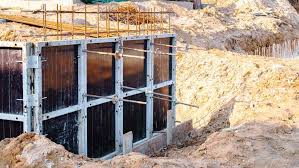Aug . 14, 2024 03:01 Back to list
Efficient Production of Concrete Slab Formwork for Construction Projects and Industrial Applications
The Importance of Shuttering in Concrete Slab Construction
In the construction industry, the integrity and durability of structures largely depend on the quality of materials and processes used during construction. One critical aspect of this is the use of shuttering, also known as formwork, especially when dealing with concrete slabs. A shuttering factory specializes in producing high-quality formwork systems that are essential for ensuring that concrete slabs are poured, set, and cured properly. This article explores the significance of shuttering in concrete slab construction, the types of shuttering available, and the benefits of investing in a reputable shuttering factory.
Understanding Shuttering
Shuttering refers to the temporary or permanent molds used to shape concrete until it solidifies. In the context of concrete slabs, shuttering provides the necessary support for the concrete while it is being poured and allows it to maintain the desired form during curing. Effective shuttering is essential for achieving precise dimensions and a smooth finish, which are critical for both aesthetic and structural reasons.
Types of Shuttering
There are various types of shuttering systems used in concrete slab construction, each catering to different needs and preferences. The most common types include
1. Timber Shuttering This traditional approach uses wooden boards to create forms. While it is cost-effective and easy to use, timber may not be the most durable solution for large or repetitive projects.
2. Steel Shuttering Steel forms are robust and reusable, making them a popular choice for large-scale construction projects. They can withstand the pressure of wet concrete and provide a high degree of finish quality.
3. Aluminum Shuttering Lightweight and easy to handle, aluminum forms are increasingly being used in the construction industry. They offer durability, reusability, and a smooth surface finish, which reduces the need for additional surface treatments.
4. Plastic Shuttering These are becoming more popular due to their lightweight nature and resistance to moisture. Plastic shutters can also be easily cleaned and reused, making them an environmentally friendly option.
concrete slab shuttering factory

Benefits of High-Quality Shuttering
Investing in high-quality shuttering from a reputable factory offers numerous benefits
1. Improved Safety Quality shuttering systems reduce the risk of collapse during the concrete pouring process, protecting workers and the surrounding environment.
2. Enhanced Finish Quality High-quality formwork results in smoother finishes, requiring less work during the polishing and finishing stages. This not only saves time but also reduces overall project costs.
3. Time Efficiency Professional shuttering solutions are designed for quick assembly and disassembly. This results in faster work cycles and helps keep projects on schedule.
4. Cost-Effectiveness While initial investments in high-quality shuttering may be more substantial, the durability and reusability of these systems lead to lower long-term costs. Fewer replacements and repairs translate into significant savings.
5. Environmental Sustainability Modern shuttering options are often designed with sustainability in mind. Reusability and minimal waste generation contribute to greener construction practices.
Conclusion
In conclusion, the significance of shuttering in concrete slab construction cannot be overstated. A dedicated shuttering factory plays a critical role in providing contractors and builders with the tools they need to ensure structural integrity, safety, and aesthetic appeal. By choosing the right type of shuttering and investing in quality products, construction professionals can optimize their projects and achieve lasting results. Whether it is through traditional timber forms or advanced aluminum solutions, the right shuttering can make all the difference in the successful construction of concrete slabs.
-
High-Quality U Head Jack Scaffolding – Reliable Scaffolding Jack Head Manufacturer & Factory
NewsJul.08,2025
-
High-Quality I Beam H20 Leading Timber Beam H20 Material Factory, Exporters & Manufacturers
NewsJul.08,2025
-
High-Quality Powder Coating Steel Formwork - Durable & Corrosion Resistant Solutions
NewsJul.07,2025
-
Inclined Column Formwork Supplier – Durable & Precise Solutions for Unique Structures
NewsJul.07,2025
-
High-Quality Water Stop Solutions Trusted Water Stop Company & Suppliers
NewsJul.07,2025
-
High-Quality Formwork Material Supplier Reliable Manufacturer & Factory Solutions
NewsJul.06,2025